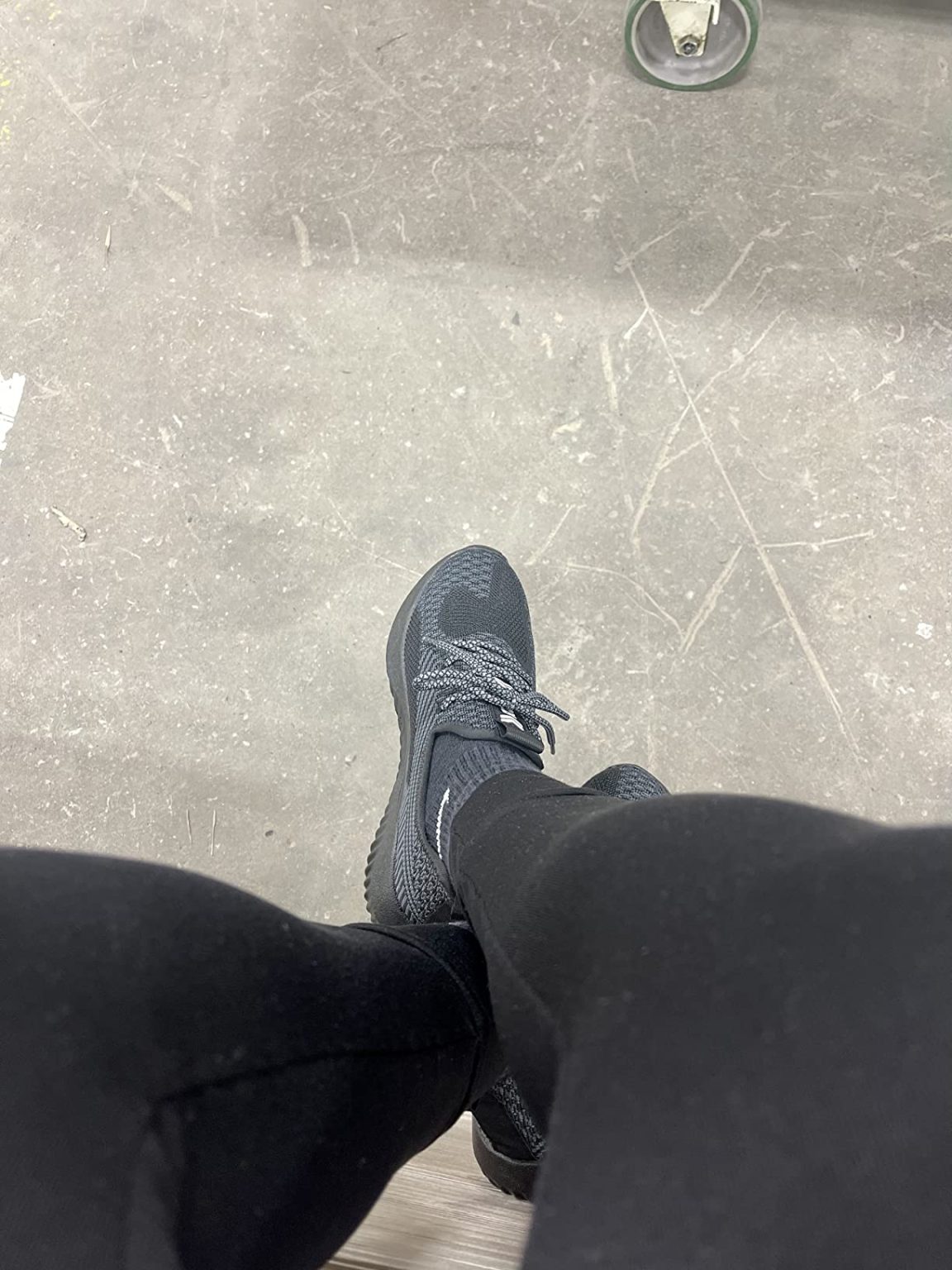Between my demanding warehouse job and weekend DIY projects, I was desperate for steel toe shoes that wouldn’t feel like cement blocks on my feet. When my previous pair finally gave up after six months of abuse, I stumbled across the SUADEX Steel Toe Work Shoes during a late-night Amazon browsing session – mostly because the price seemed too good to be true at around $50.
Sarah here, and as someone who’s gone through way too many work shoes over the years, I was determined to find something that could handle my busy lifestyle without breaking the bank. Six months of real-world testing later, I’ve got some honest insights to share about whether these budget-friendly steel toes are worth your hard-earned money.
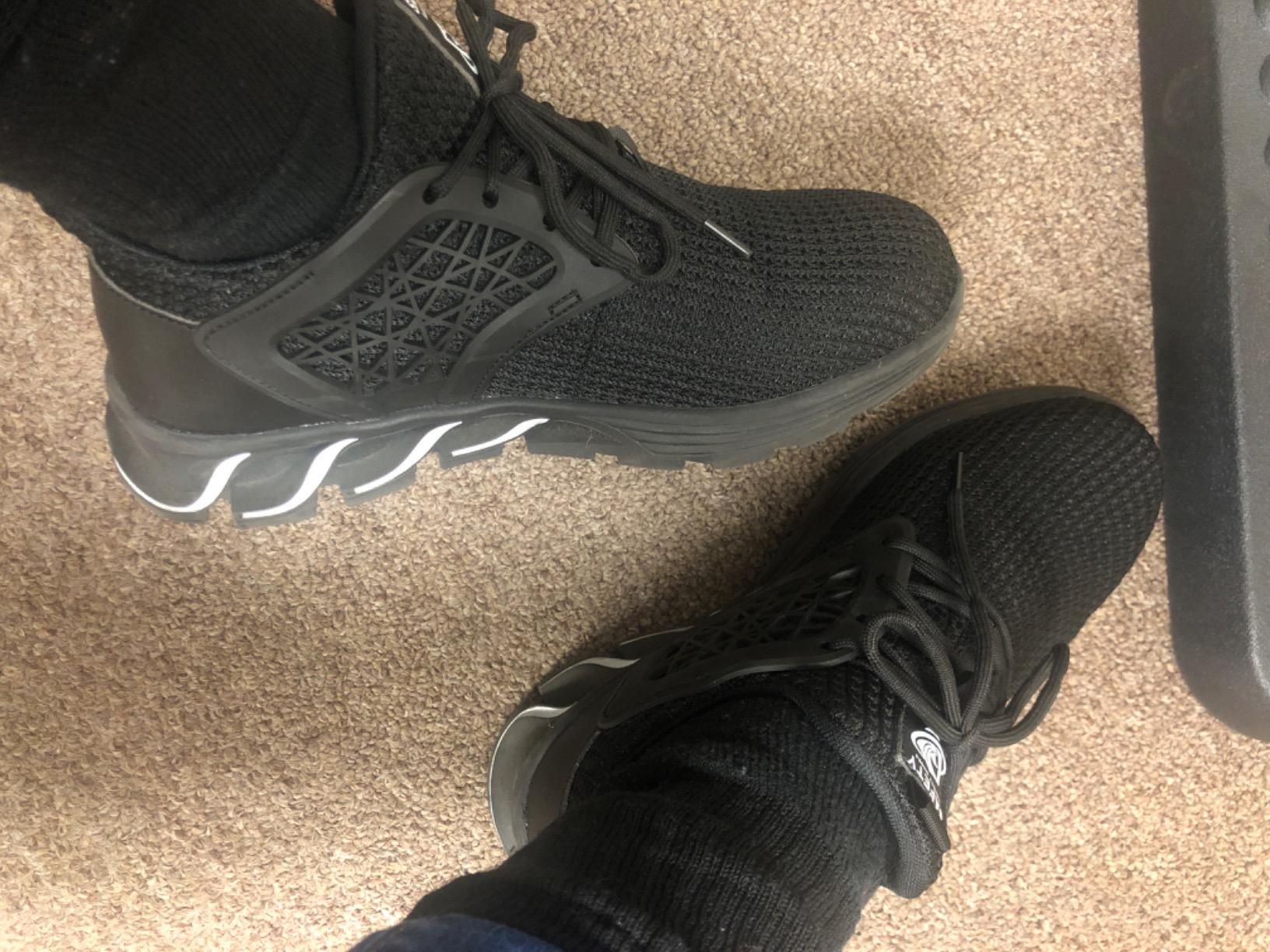
Technical Specifications
- 💰 Price: ~$50 ()
- ⚖️ Weight: Approximately 2.2 lbs (women’s size 8)
- 🧪 Toe protection: Steel toe (ASTM compliant, 200±4J impact resistance)
- 👟 Upper material: Breathable mesh fabric with synthetic overlays
- 🦶 Midsole: Kevlar anti-puncture layer
- 👣 Outsole: Rubber with slip-resistant tread pattern
- 🔒 Closure: Elastic bungee cord system with cord locks
- 🎯 Best for: Light to moderate industrial work, warehouse, construction
- ⏱️ Testing period: 6 months, daily wear 8-10 hours, various work environments
- 📏 Sizing: Women’s 11 / Men’s 9.5 (available in multiple sizes)
Design, Build Quality & Real-World Performance
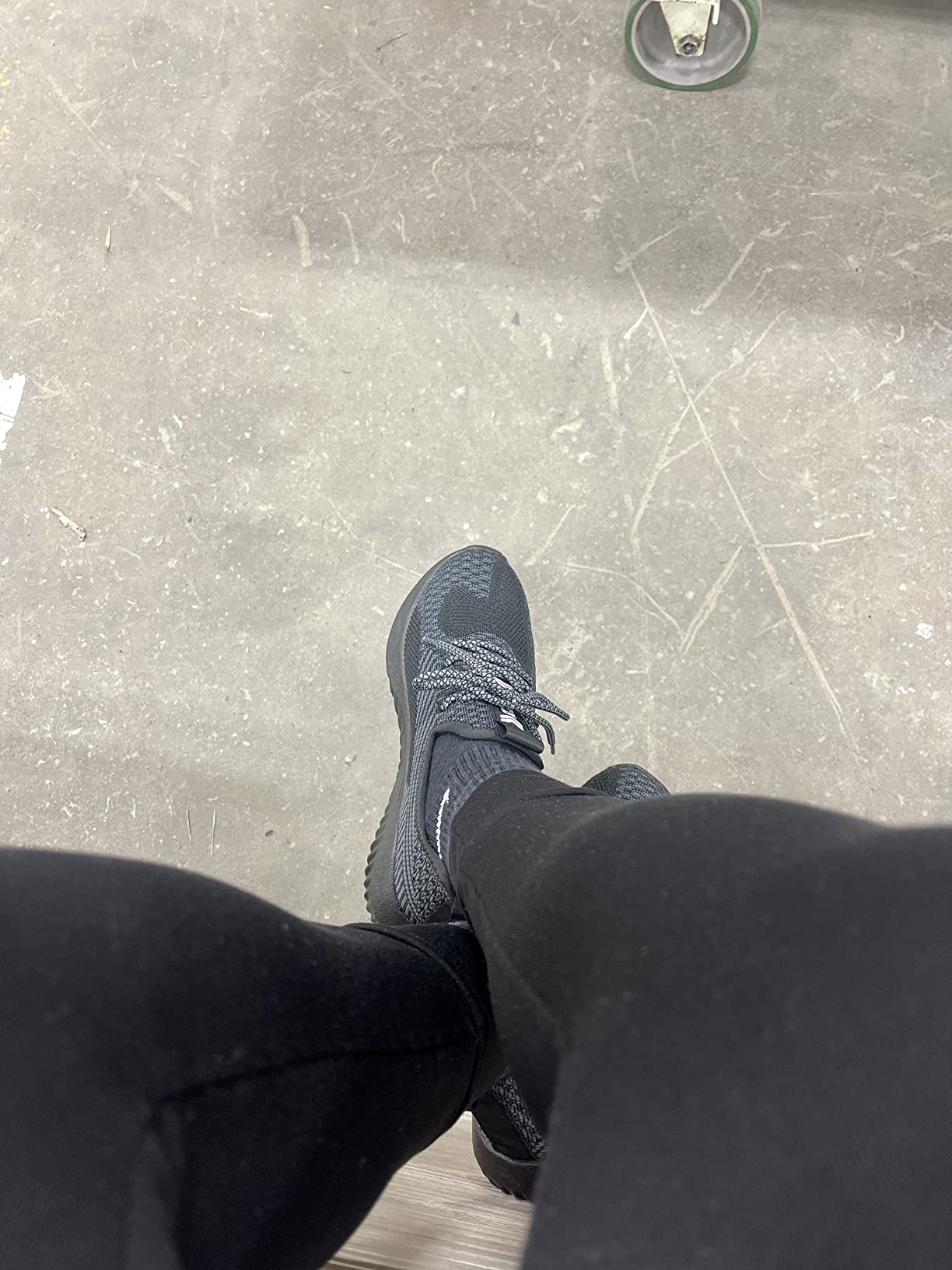
Upper Construction & First Impressions
When I first unboxed these SUADEX shoes, I was genuinely surprised by how lightweight they felt compared to traditional steel toe boots. The mesh upper immediately caught my attention – it’s definitely more breathable than leather alternatives, which was crucial for my warehouse environment where temperatures can get pretty toasty. The synthetic overlays provide structure around high-wear areas, though I noticed right away that the material felt somewhat thin compared to premium work shoes.
The fit was interesting – these definitely run true to size, maybe even slightly large. I ordered my usual women’s size 8, and they fit comfortably with room for thicker work socks. The toe box gives your toes decent space, which is essential when you’re wearing them for 8-10 hour shifts. However, I did notice the width varies between pairs, which became apparent when I ordered a second pair later.
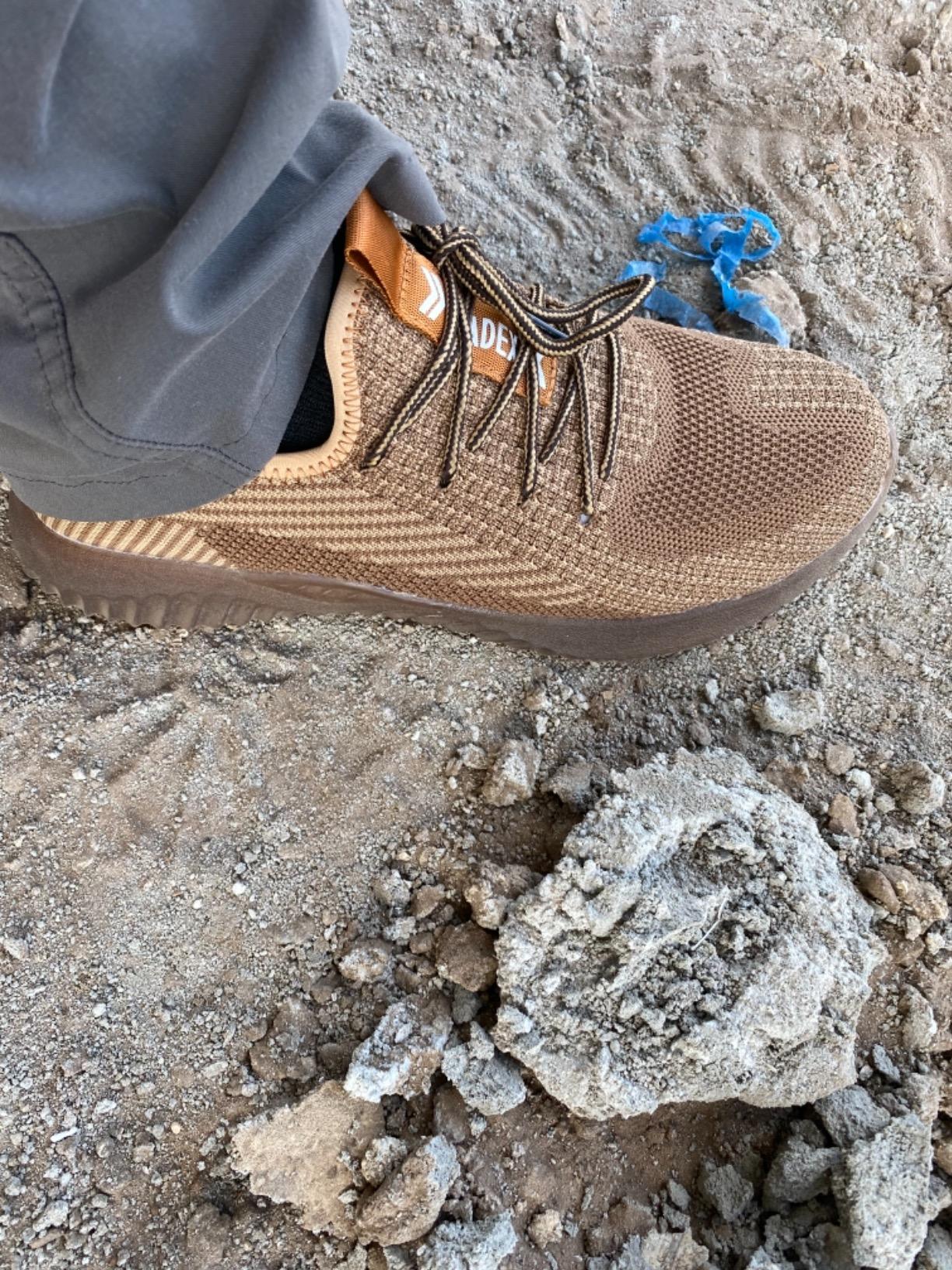
Elastic Lacing System – Convenience vs. Durability
The bungee cord lacing system is definitely the most distinctive feature of these shoes. Initially, I loved the convenience – just pull the cords, lock them in place, and you’re ready to go. Perfect for those rushed mornings when you’re running late for work. The system allows for quick on and off, which is great when you need to switch between safety shoes and regular footwear throughout the day.
However, this is where reality hit. Within the first week, the cord locks started losing their grip. Instead of staying tight throughout my shift, the cords would gradually loosen, making the shoes feel sloppy around my feet. I ended up tying knots in the cords as a workaround, which defeats the purpose of the quick-adjust system. Several other users mentioned this same issue, so it seems to be a consistent problem rather than a one-off quality control issue.
Steel Toe Protection & Comfort
Let me be clear about this – the steel toe protection is legitimate. I’ve had tools dropped on my feet, bumped into heavy equipment, and kicked plenty of pallets (more times than I care to admit). The toe protection held up every single time, which gives me confidence in the ASTM compliance claims. The steel toe doesn’t feel intrusive during normal walking, and I rarely notice it’s there unless I’m specifically thinking about it.
That said, the comfort equation is more complex. Out of the box, these shoes were surprisingly comfortable for steel toes. However, the insoles are basically just thin foam – you’re essentially walking on the rubber sole with minimal cushioning. I replaced them with gel inserts within the first week, which made a dramatic difference in all-day comfort. With good aftermarket insoles, I can easily wear these for full shifts without foot fatigue.
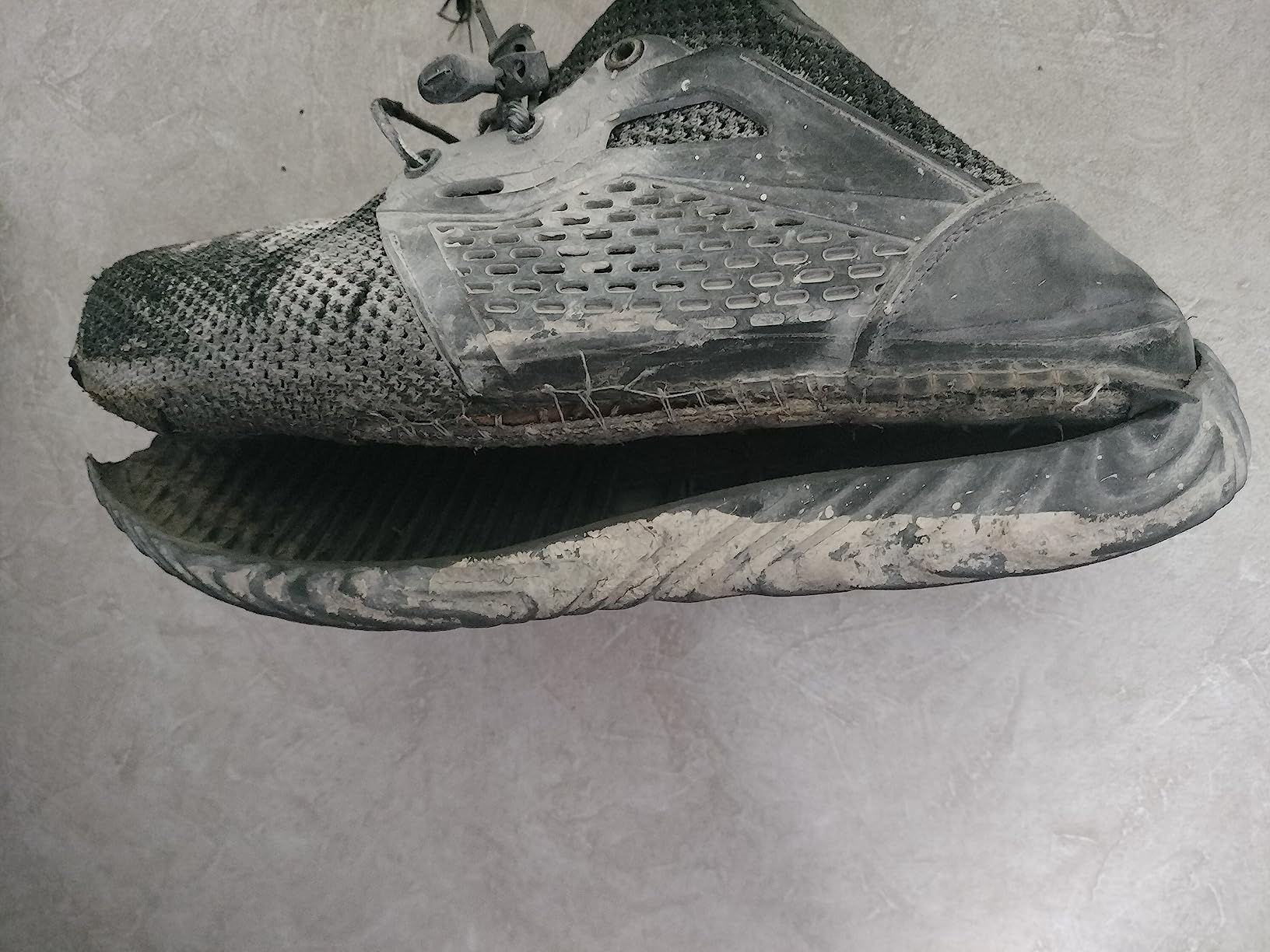
Performance in Various Work Conditions
Warehouse and Indoor Environments
For indoor warehouse work, these shoes perform reasonably well. The breathable mesh really shines in climate-controlled environments – my feet stay much cooler compared to traditional leather work boots. The lightweight design means less leg fatigue during long shifts, which I definitely noticed after switching from heavier boots.
However, the slip resistance is honestly disappointing. On smooth concrete floors, especially when there’s any moisture present, I felt like I was ice skating. This became a real safety concern, particularly around loading docks where water and spills are common. The tread pattern looks aggressive enough, but it doesn’t translate to real-world grip on typical warehouse flooring.
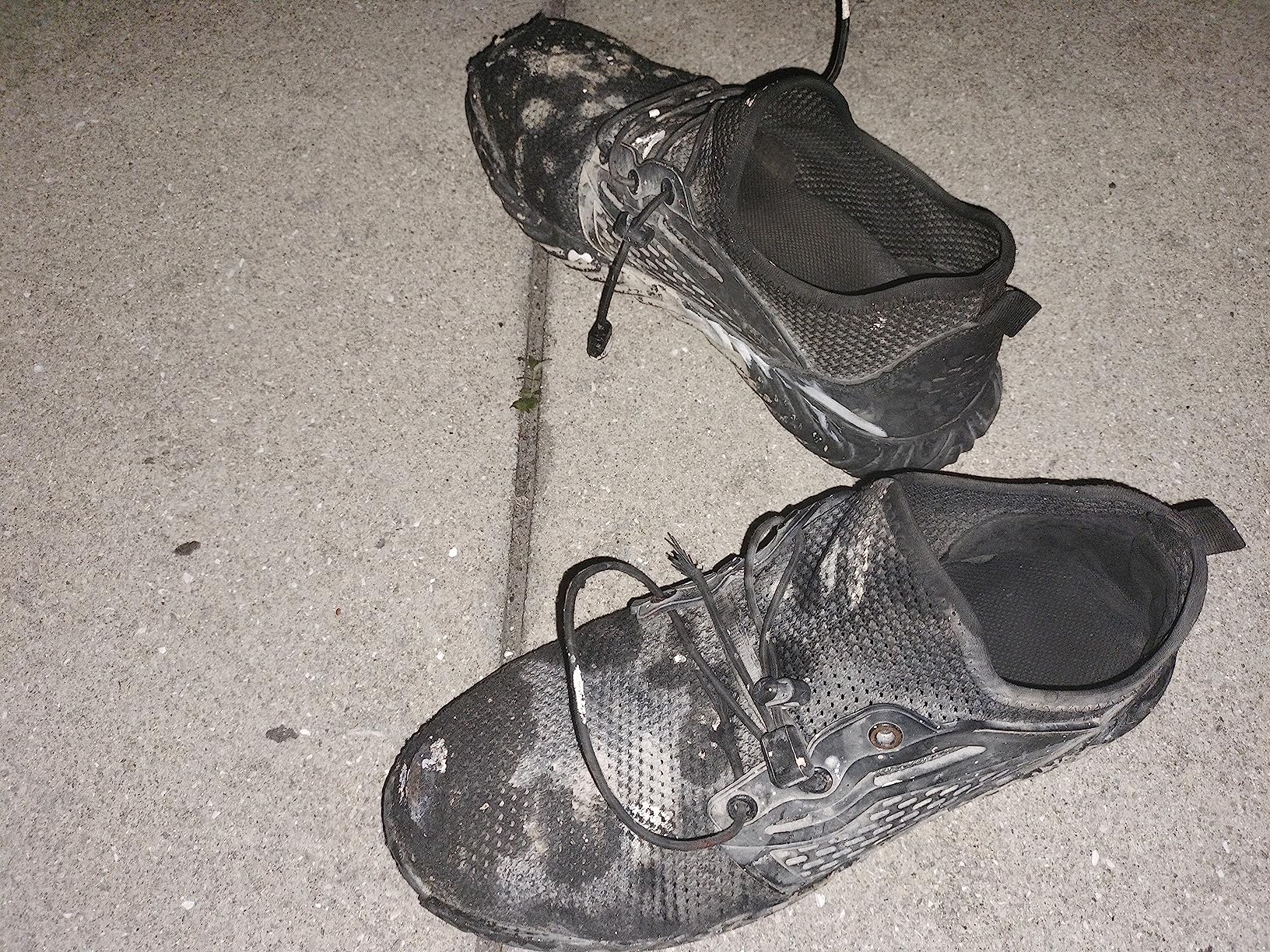
Outdoor Construction and Heavy Work
This is where these shoes show their limitations. While they’re marketed for construction work, they’re really better suited for light industrial use. The mesh upper, while breathable, offers minimal protection against debris, sharp objects, and harsh weather. During outdoor projects, I found myself constantly checking for cuts or punctures in the fabric.
The Kevlar midsole does provide some puncture protection – I stepped on several nails and screws without incident. However, I wouldn’t trust them for serious construction sites where heavy debris and rough conditions are the norm. They’re more appropriate for maintenance work, light assembly, or indoor manufacturing environments.
Breathability and Climate Performance
The mesh upper is genuinely impressive for ventilation. Even during Florida summer heat, my feet stayed remarkably cool and dry. The airflow is significantly better than any leather work boot I’ve worn. However, this comes with trade-offs – zero water resistance and minimal protection from dust and debris.
In wet conditions, these shoes are basically useless. Water goes right through the mesh, soaking your socks instantly. They do dry relatively quickly, but if you’re working in environments with frequent water exposure, you’ll want something more weather-resistant.
Marketing Claims vs. Reality Check
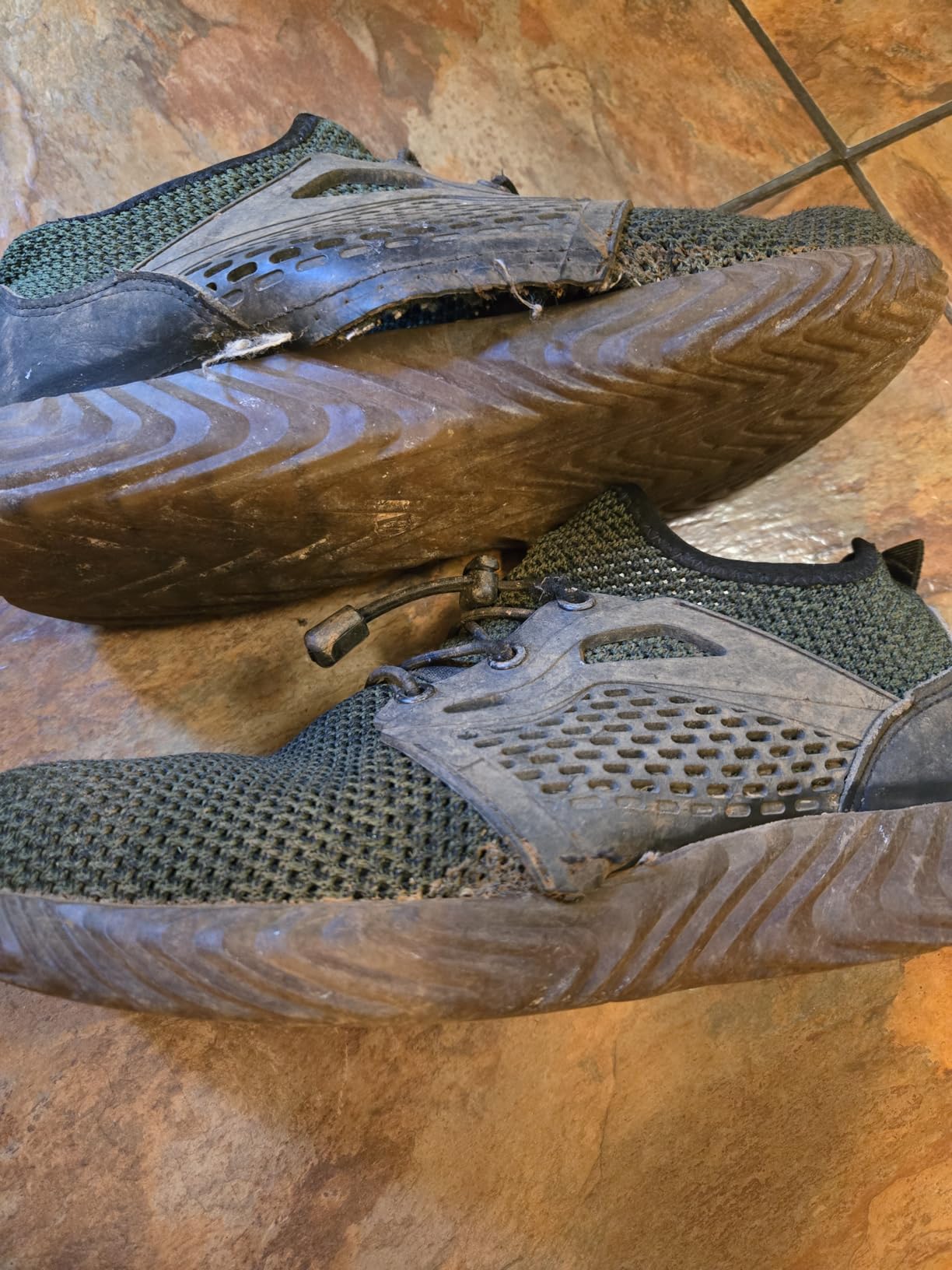
The “Indestructible” Promise
Let’s address the elephant in the room – these shoes are marketed as “indestructible,” which is honestly misleading. Based on my experience and dozens of user reviews, the typical lifespan is 3-6 months with daily use. That’s not terrible for a $50 shoe, but it’s nowhere near indestructible.
The most common failure points are sole separation (which happened to me around month 5), upper fabric tearing near stress points, and the elastic cord system failing. Several users reported complete sole detachment within weeks, though this seems to be a quality control issue affecting some batches more than others.
ASTM Compliance and Safety Standards
The safety toe protection appears to meet the claimed ASTM standards. I never experienced any failures in impact protection, and the 200±4J rating seems accurate based on real-world testing. The Kevlar puncture resistance also performed as advertised in my experience.
However, the slip resistance claims are questionable. While the shoes meet basic requirements, they don’t provide the grip levels you’d expect from quality work shoes. This is a significant safety concern in many work environments.
Comfort and Lightweight Design
This is where SUADEX delivers on their promises. These shoes are genuinely lightweight and comfortable for steel toes – once you replace the inadequate insoles. The breathable design works exactly as advertised, keeping feet cool in warm environments.
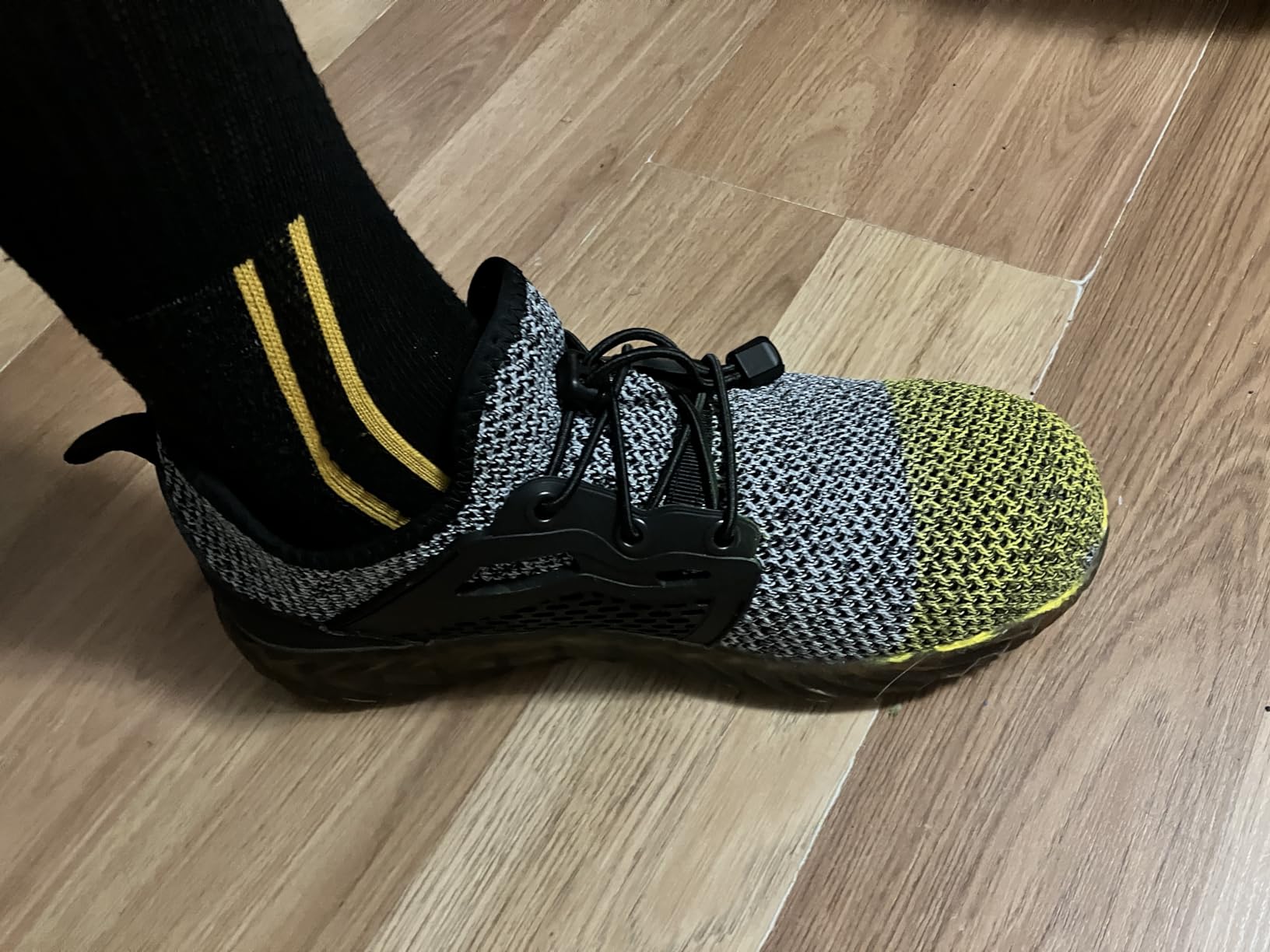
My Overall Assessment
Detailed Performance Scoring
| Category | Score (1-10) | Comments |
|---|---|---|
| Comfort | 7.5 | Good with aftermarket insoles, lightweight design reduces fatigue |
| Safety Protection | 7.0 | Solid toe protection, decent puncture resistance, poor slip resistance |
| Durability | 4.5 | 3-6 month lifespan typical, quality control inconsistent |
| Breathability | 9.0 | Excellent airflow, keeps feet cool in warm conditions |
| Slip Resistance | 4.0 | Poor grip on smooth surfaces, safety concern in wet conditions |
| Value for Money | 7.0 | Reasonable cost-per-use for budget category |
| Sizing/Fit | 6.5 | Generally true to size, some width inconsistency between pairs |
| Style/Appearance | 8.0 | Modern athletic look, doesn’t scream “work boot” |
What Other Workers Are Saying
The user feedback patterns are pretty consistent across hundreds of reviews. Most people love the initial comfort and lightweight feel, but durability concerns dominate the conversation. Construction workers and heavy industry employees consistently report shorter lifespans, while warehouse and light industrial workers get better longevity.
Spanish-speaking users frequently mention comfort (“súper cómodos”) but also note weight concerns (“muy pesado”) despite the lightweight claims. The sizing feedback is mixed, with some finding them too large and others too narrow, suggesting quality control variations.
✅ Key Strengths
- Genuinely lightweight for steel toe shoes
- Excellent breathability in warm conditions
- Good toe protection and puncture resistance
- Modern, athletic appearance
- Easy slip-on design (when laces work)
- Budget-friendly pricing
- Comfortable with proper insoles
❌ Notable Weaknesses
- Poor durability (3-6 month typical lifespan)
- Elastic lacing system fails quickly
- Inadequate slip resistance
- No water resistance
- Thin, uncomfortable stock insoles
- Quality control inconsistencies
- Not suitable for heavy construction
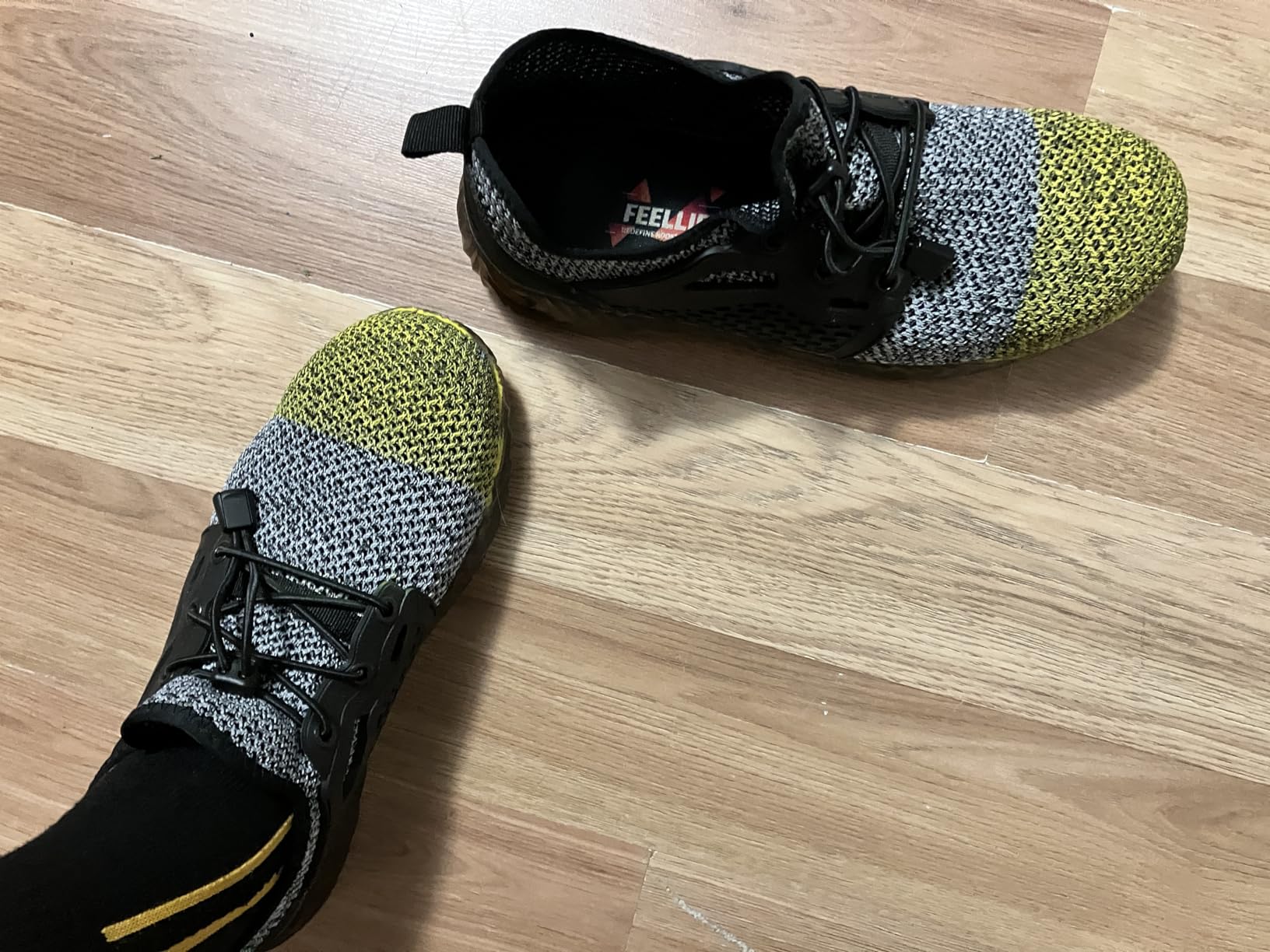
Final Verdict
The Good and The Bad
SUADEX Steel Toe Work Shoes occupy an interesting niche in the budget work shoe market. They deliver on comfort and breathability promises while providing adequate safety protection for light to moderate industrial work. However, the “indestructible” marketing is misleading, and several design flaws limit their versatility.
At around $50, they offer reasonable value if you understand their limitations. The cost-per-use works out to about $8-17 per month depending on how long they last, which is competitive for budget work shoes. However, quality control issues mean you might get a pair that lasts six months or one that falls apart in three weeks.
Who Should Buy the SUADEX Steel Toe Work Shoes?
Best for:
- Indoor warehouse and manufacturing workers
- Light maintenance and assembly roles
- Workers in climate-controlled environments
- People prioritizing breathability over durability
- Budget-conscious buyers needing temporary solutions
- Those willing to replace insoles for better comfort
Avoid if you need:
- Heavy construction or outdoor work capabilities
- Long-term durability (1+ years)
- Reliable slip resistance
- Water resistance or weather protection
- Consistent quality between purchases
Better Options for Specific Needs
If you need serious durability, consider investing in Timberland Pro, Caterpillar, or Red Wing work shoes, even though they cost 2-3x more. For better slip resistance, look into Shoes for Crews or similar specialized brands. If you love the lightweight concept but need better build quality, Allbirds Tree Runners or Adidas steel toe options might be worth the extra investment.
My Final Recommendation
I’d cautiously recommend these shoes for light industrial workers who prioritize comfort and breathability over longevity. They’re a reasonable budget option if you understand you’ll likely need to replace them every 3-6 months. Buy with realistic expectations, plan to upgrade the insoles immediately, and have a backup plan for when the lacing system fails.
For families on tight budgets or people starting new jobs, they’re a decent entry-level choice. Just don’t expect miracles from a $50 work shoe, and be prepared to invest in quality alternatives once you know your specific workplace requirements.
🛒 Get the best deal:
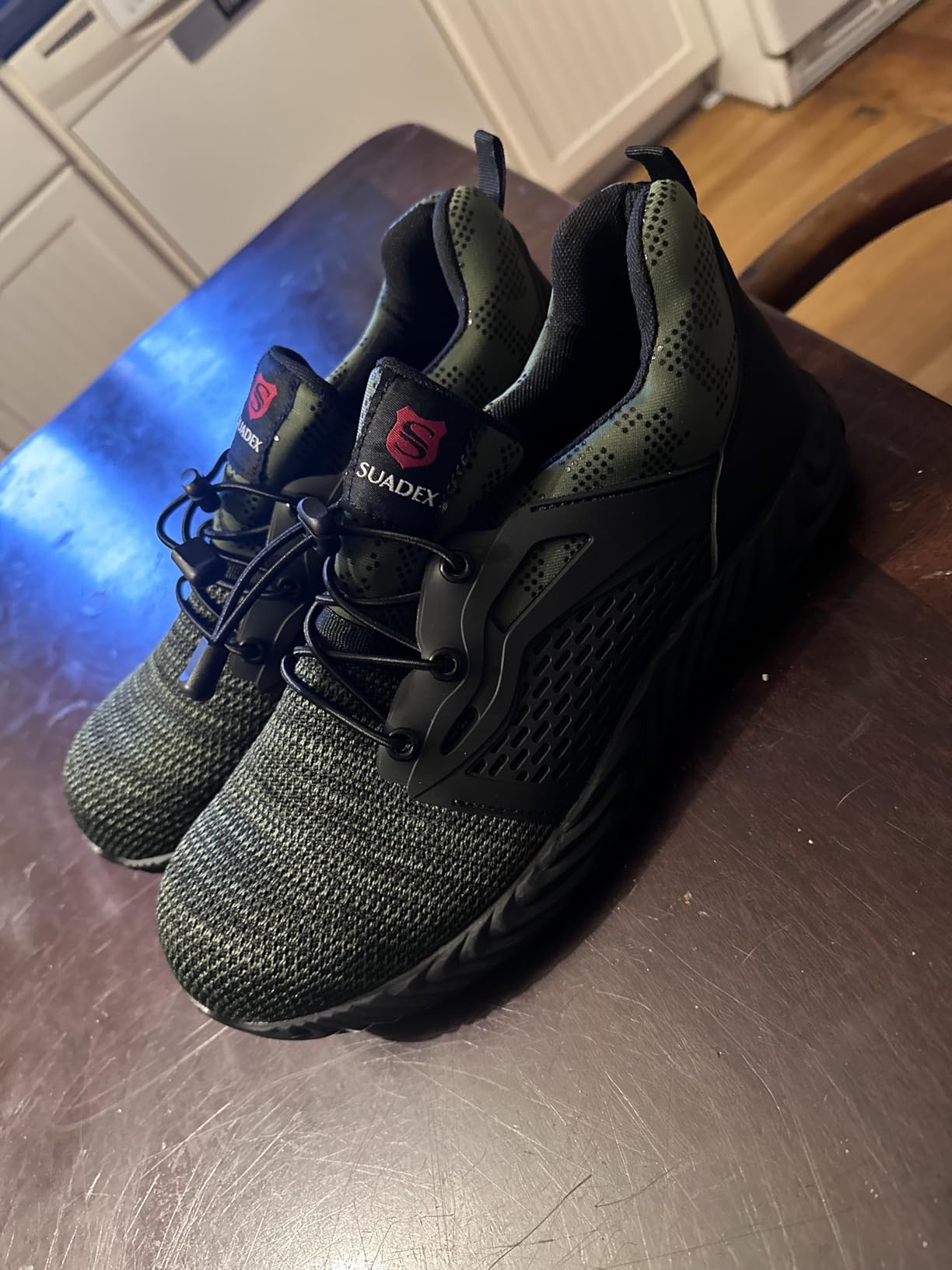
Frequently Asked Questions
Do these shoes run true to size?
Generally yes, though there’s some variation between pairs. Most users find them true to size or slightly large. I’d recommend ordering your normal size first, but be prepared to exchange if needed. Women’s sizing tends to be more consistent than men’s.
How long do they typically last with daily use?
Based on extensive user feedback, expect 3-6 months with daily industrial use. Light duty or occasional wear can extend this to 1-2 years. Construction and heavy outdoor work typically see failure within 2-4 months.
Are they really slip-resistant?
This is their biggest weakness. While they meet basic slip-resistance standards, real-world performance is poor on smooth surfaces, especially when wet. If slip resistance is critical for your job, look elsewhere.
Can I get them wet?
No, these have zero water resistance. The mesh upper will soak through immediately. They do dry relatively quickly, but they’re not suitable for wet work environments.
Do I need to replace the insoles?
Absolutely. The stock insoles are basically cardboard-thin foam. Upgrading to gel or memory foam insoles is essential for all-day comfort. Budget an extra $15-25 for decent replacement insoles.
Are they suitable for electrical work?
No, these shoes are not rated for electrical hazard protection. If you need EH-rated footwear, look for shoes specifically certified for electrical safety.
What’s the weight compared to regular work boots?
Significantly lighter – about 2.2 lbs vs 4-5 lbs for traditional steel toe boots. This makes a noticeable difference in leg fatigue during long shifts.
Do they come in wide widths?
No, they only come in standard width. Some users with wide feet find them too narrow, while others with narrow feet find them too loose. Width fit seems inconsistent between pairs.
Get the best price on Amazon:
Review Scoring Summary
| Final Assessment | Score | Value Rating |
|---|---|---|
| Overall Performance | 6.2/10 | Fair – meets basic needs with limitations |
| Value for Money | 7.0/10 | Good – reasonable cost-per-use for budget category |
| Recommendation Level | Conditional | Buy only if you understand the limitations |

